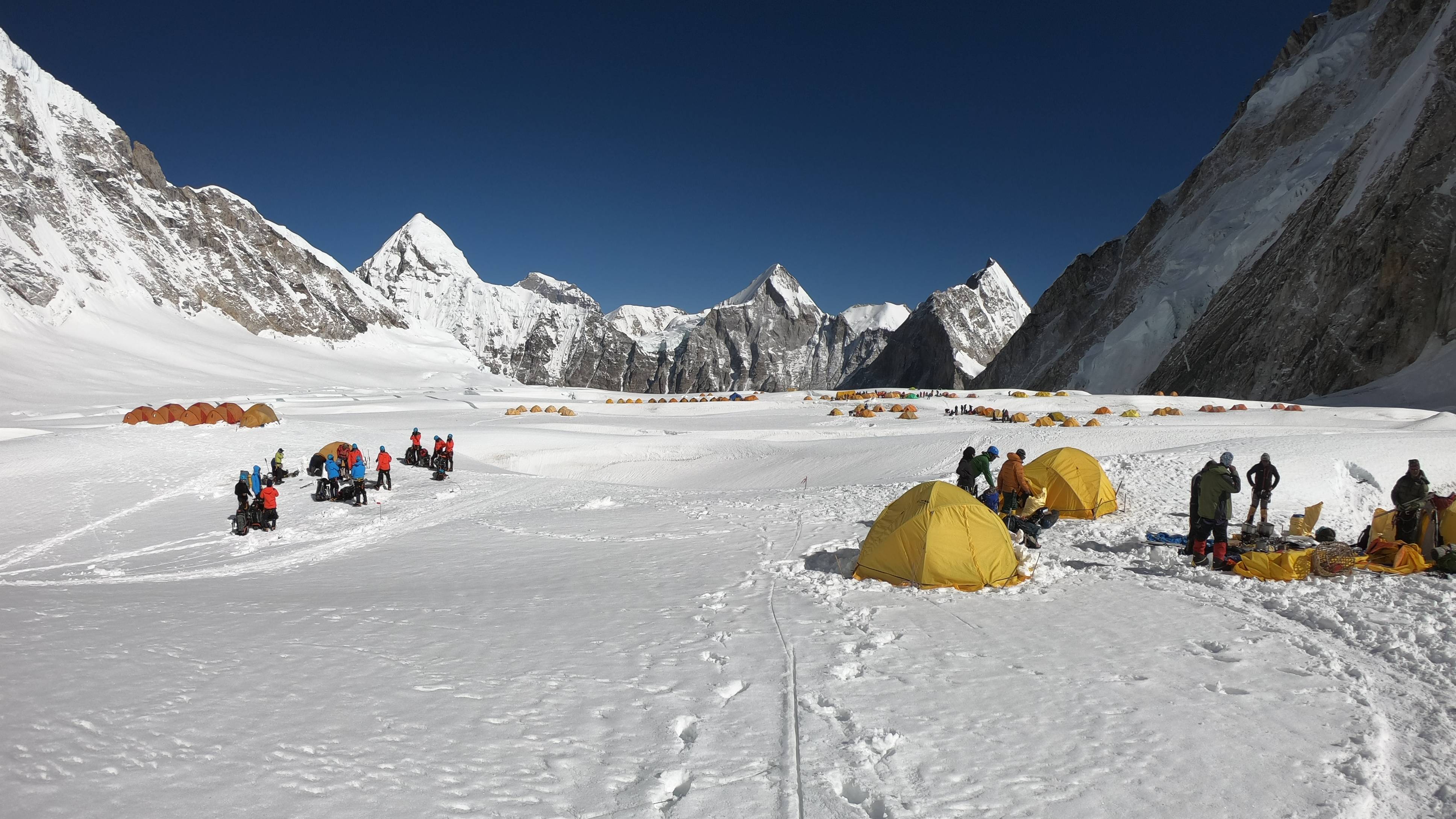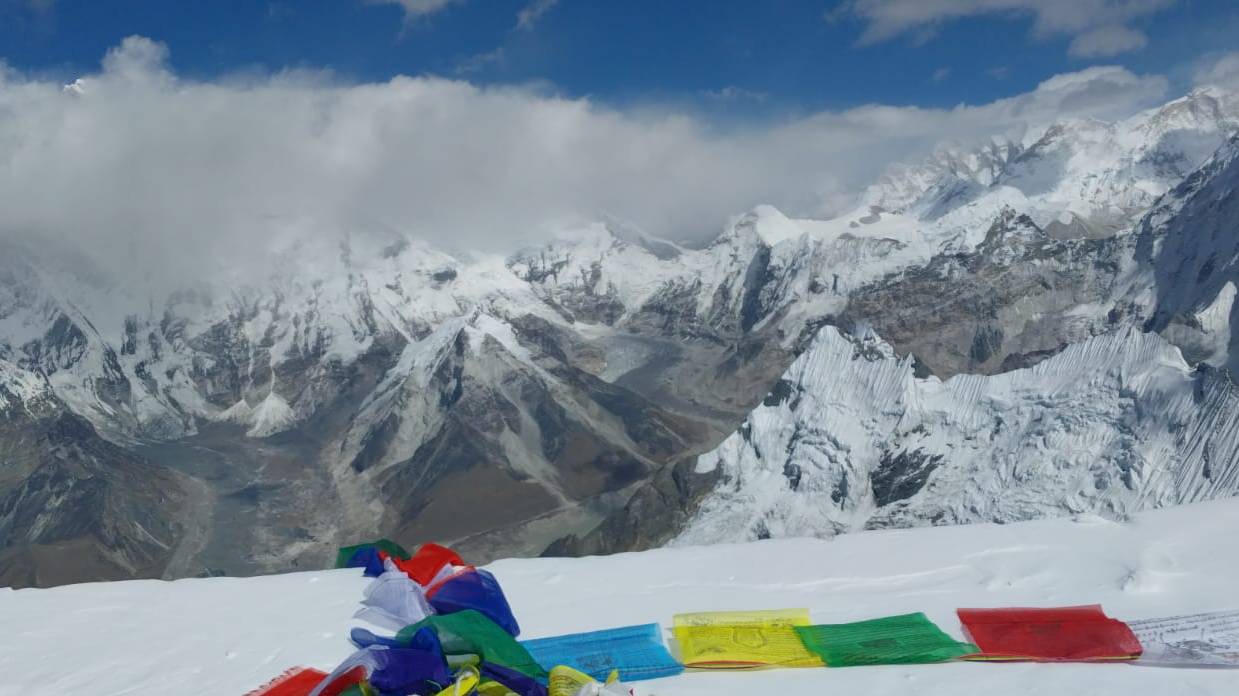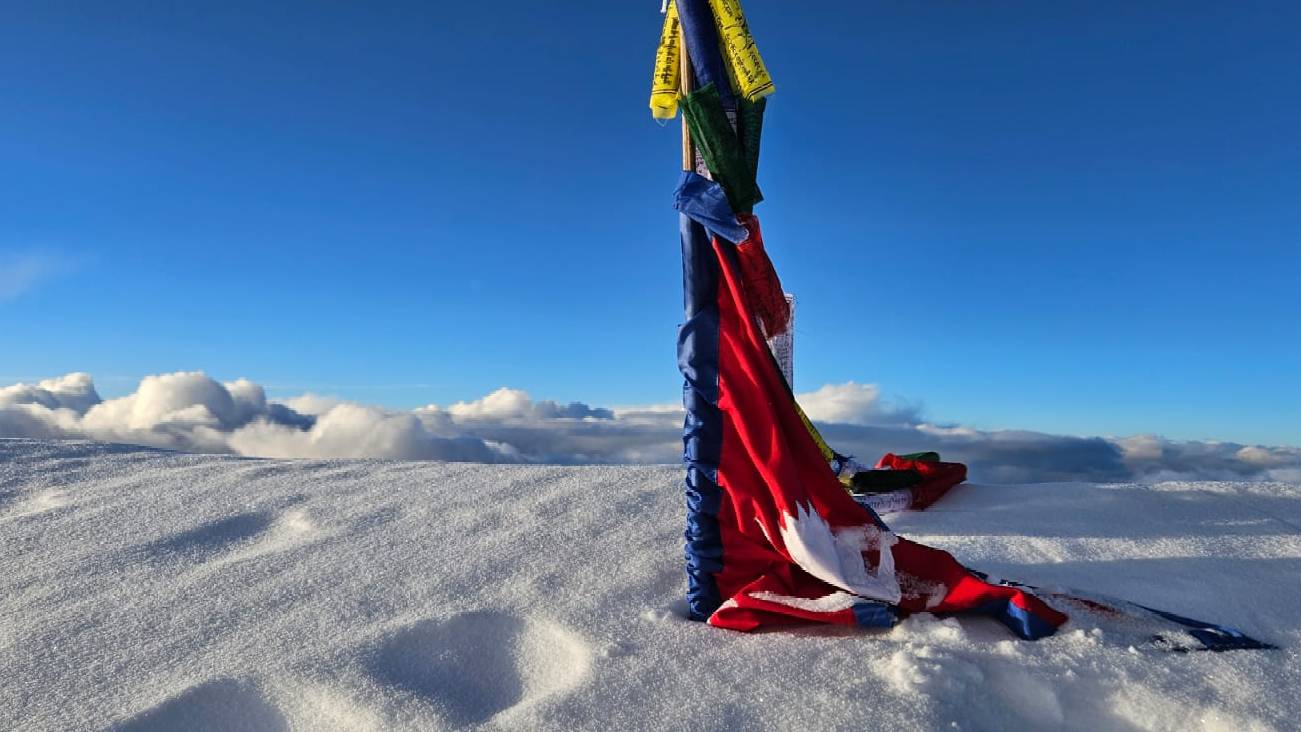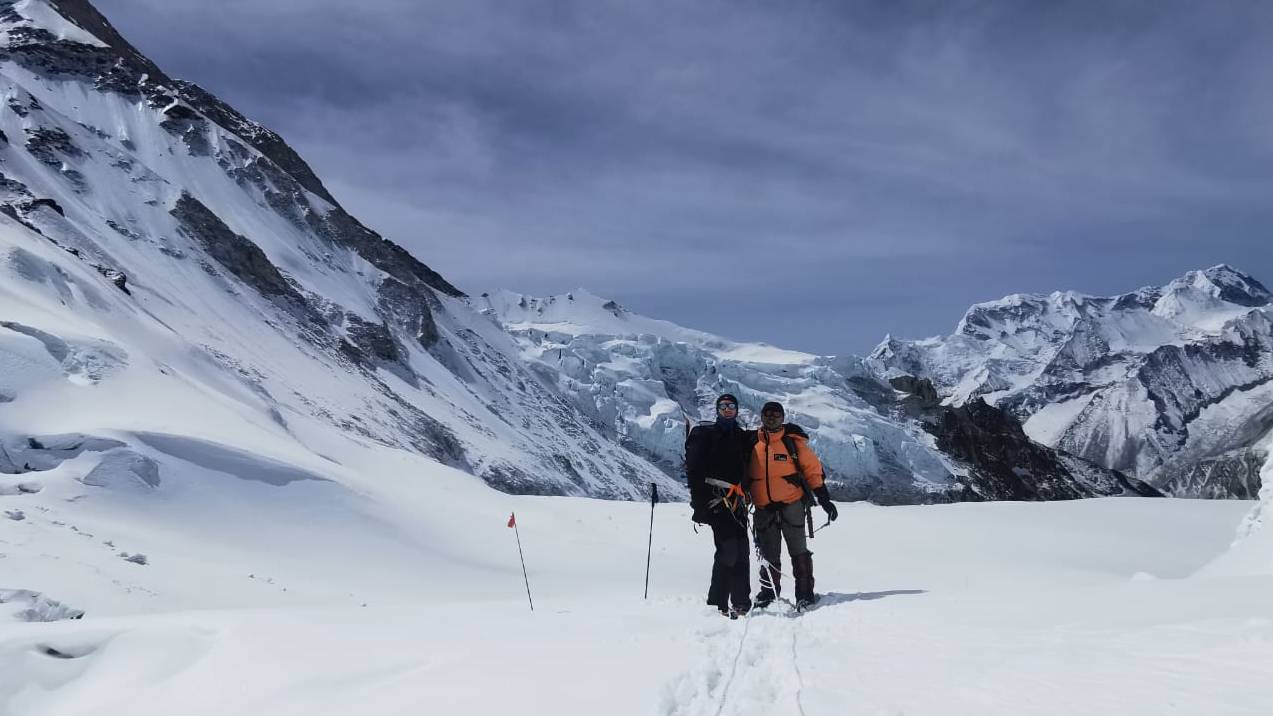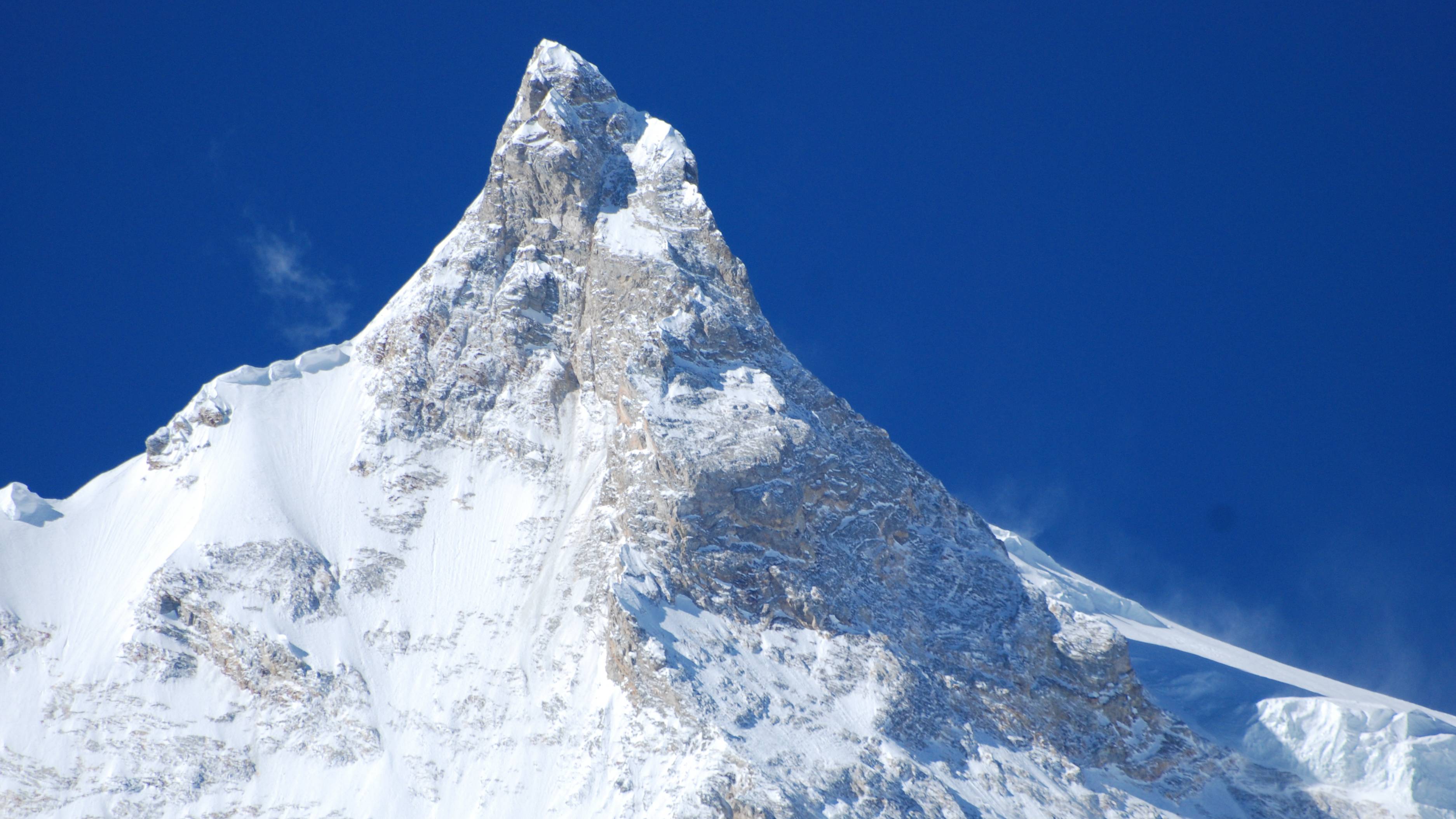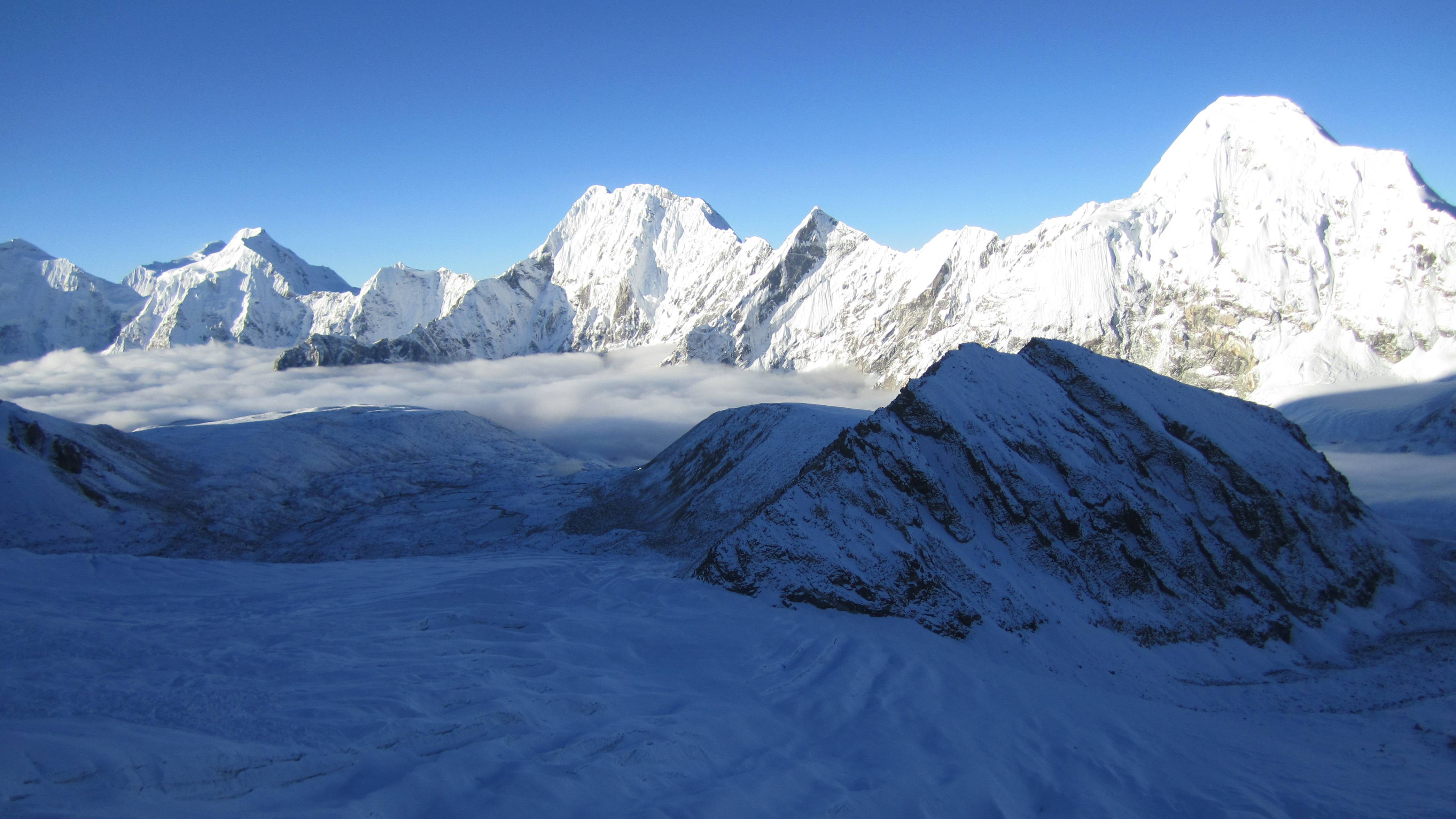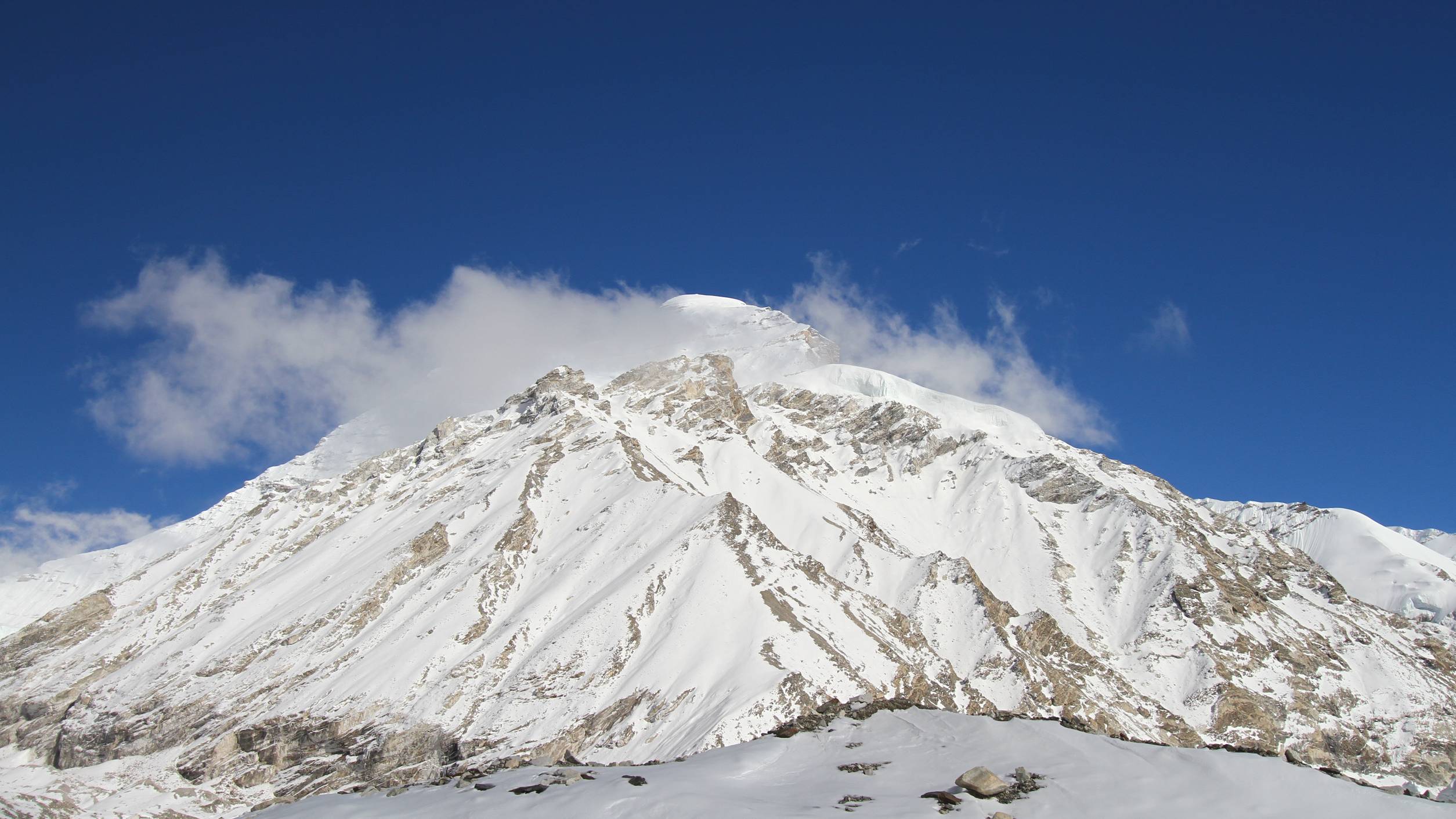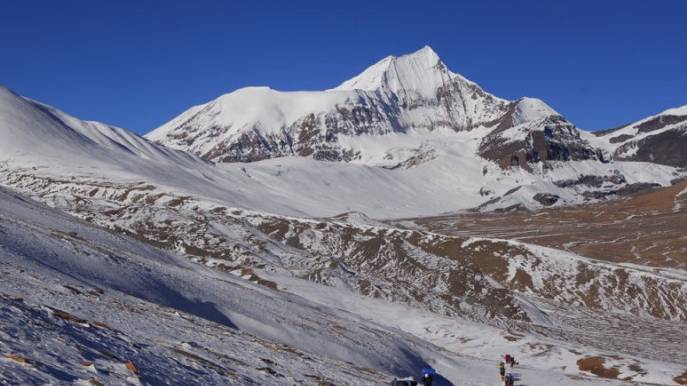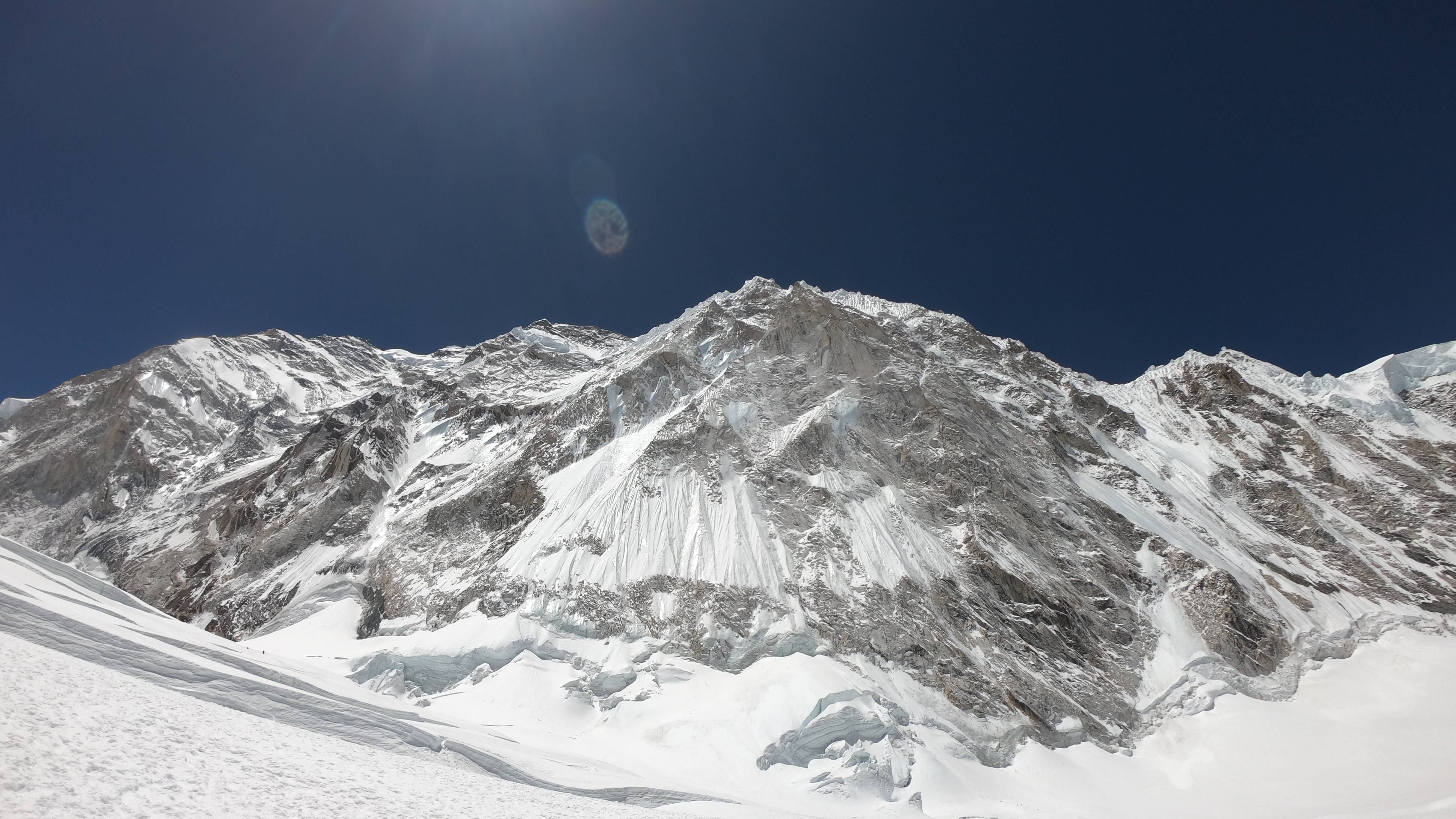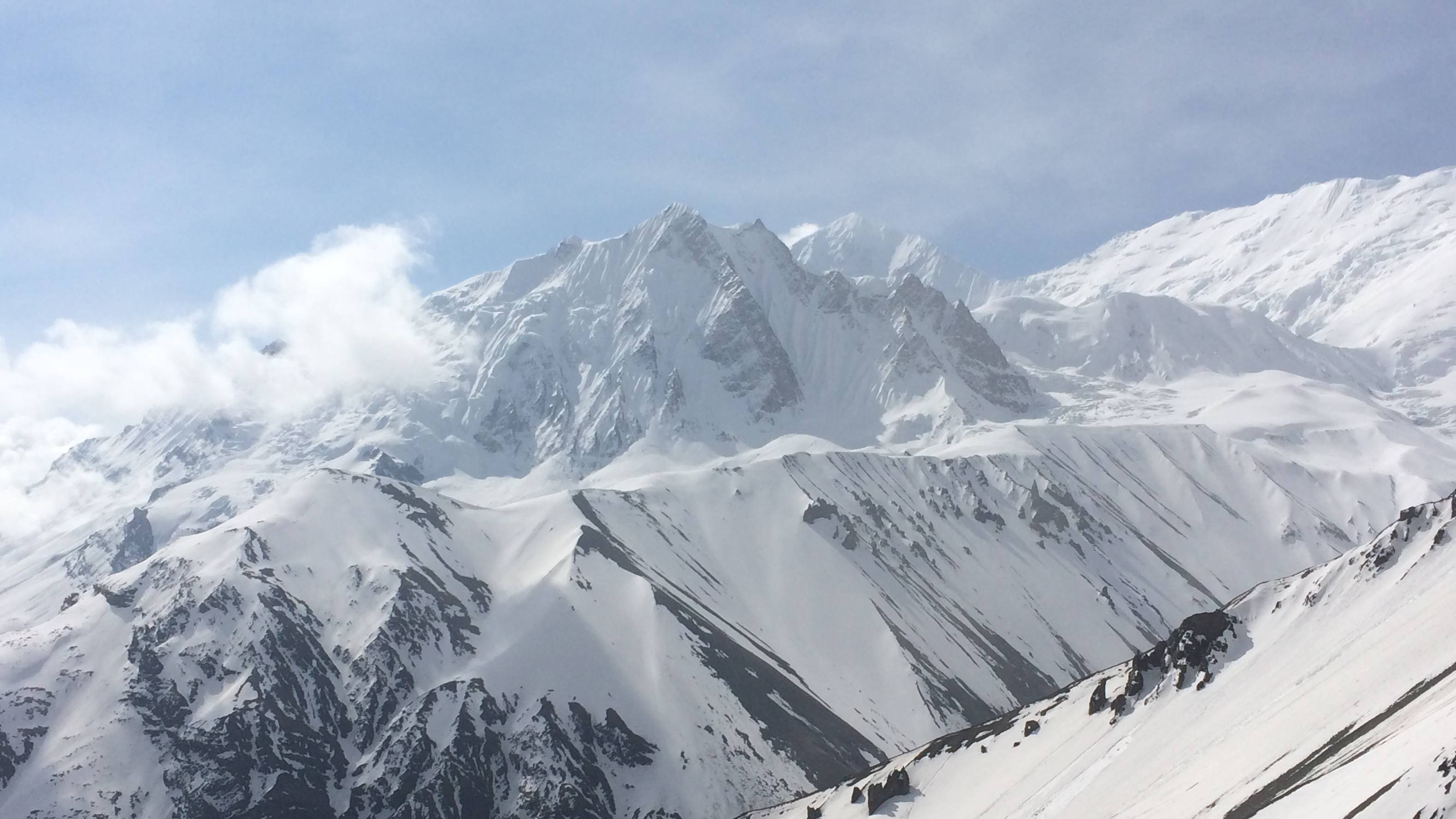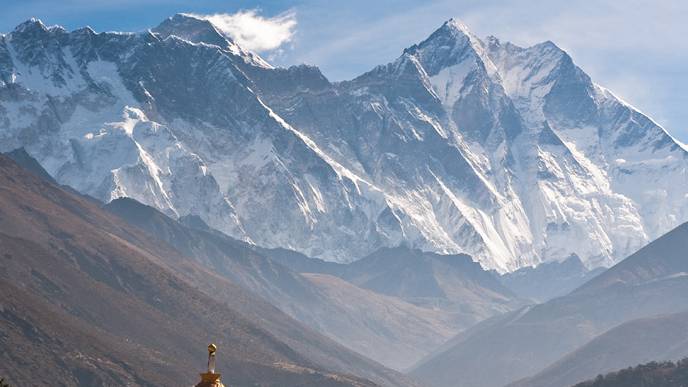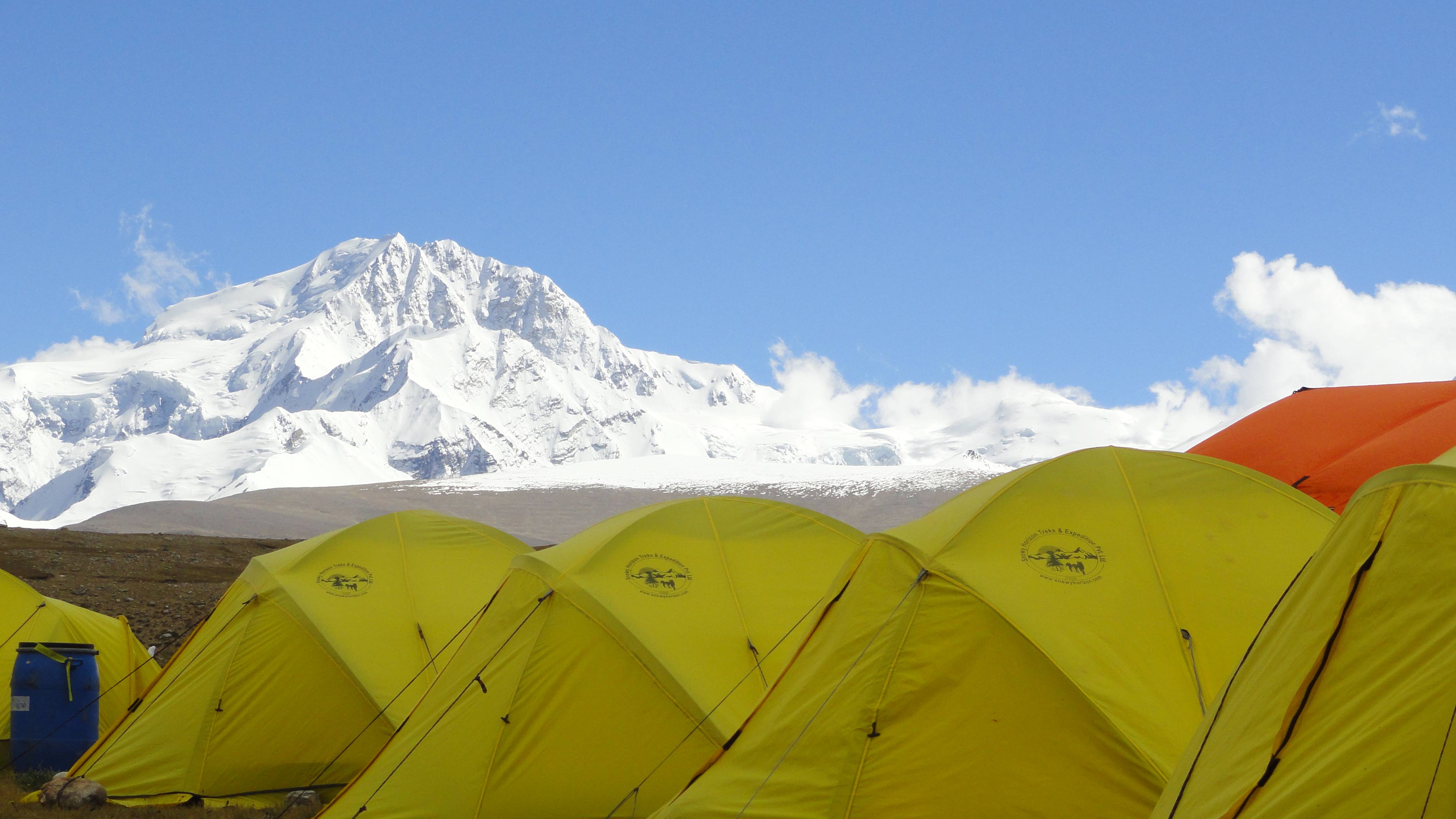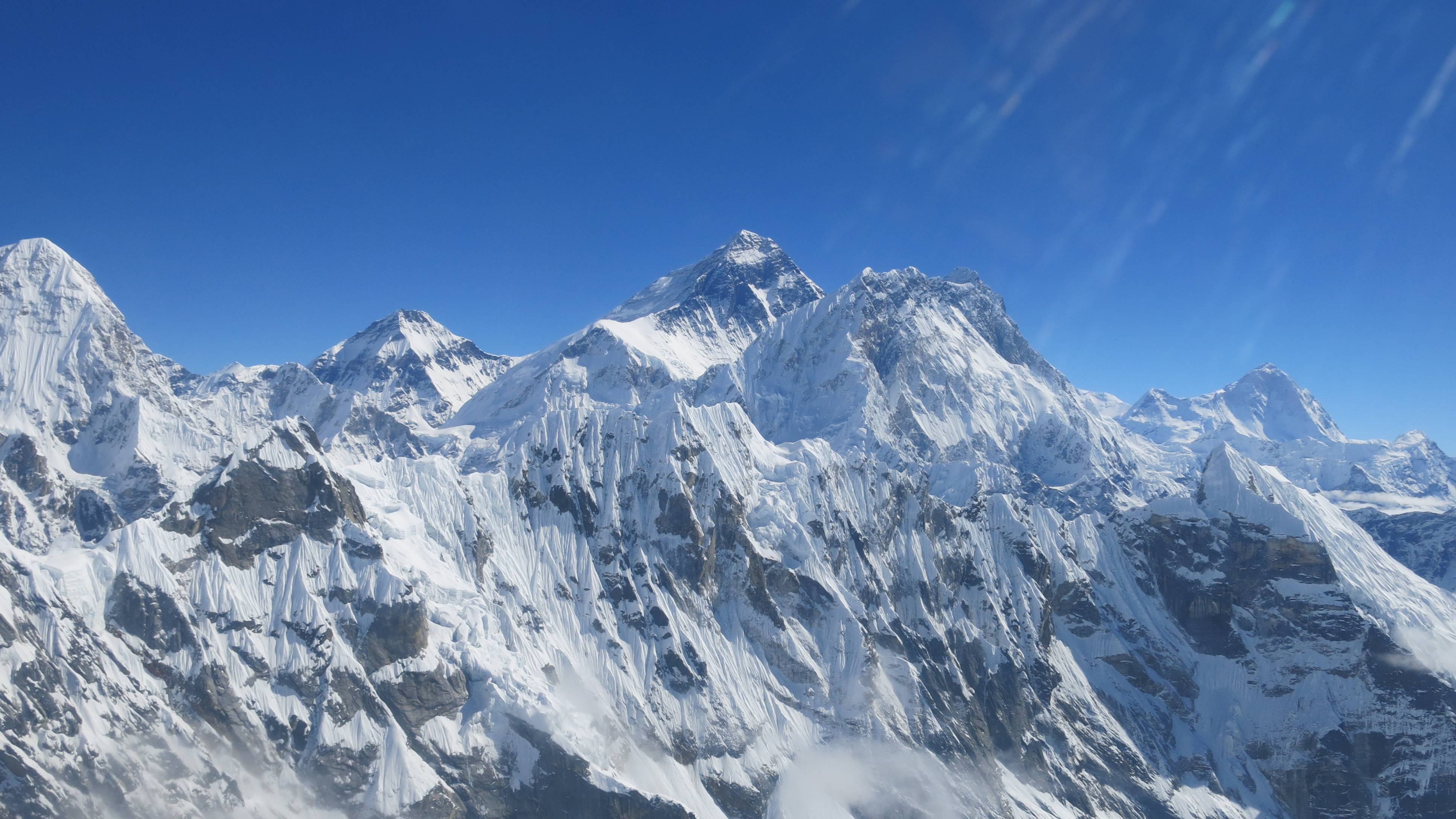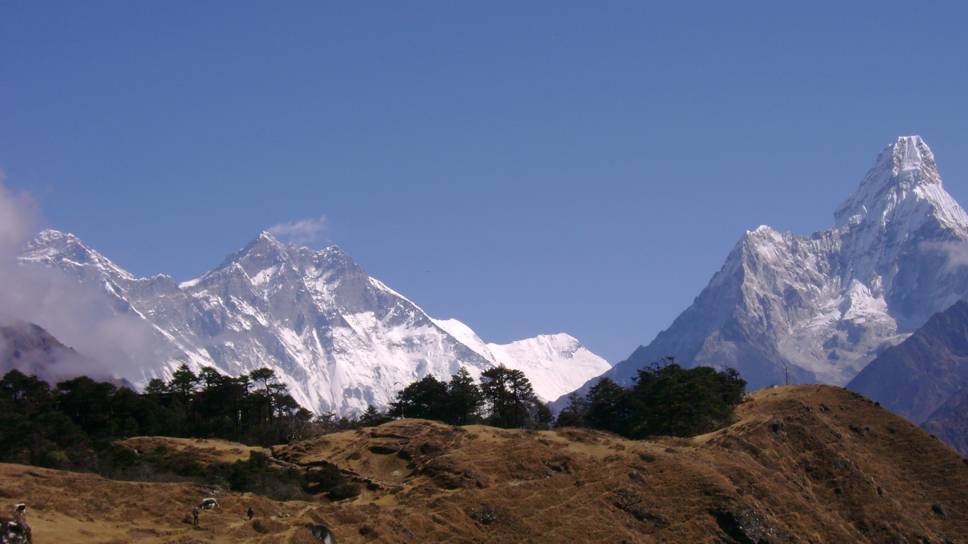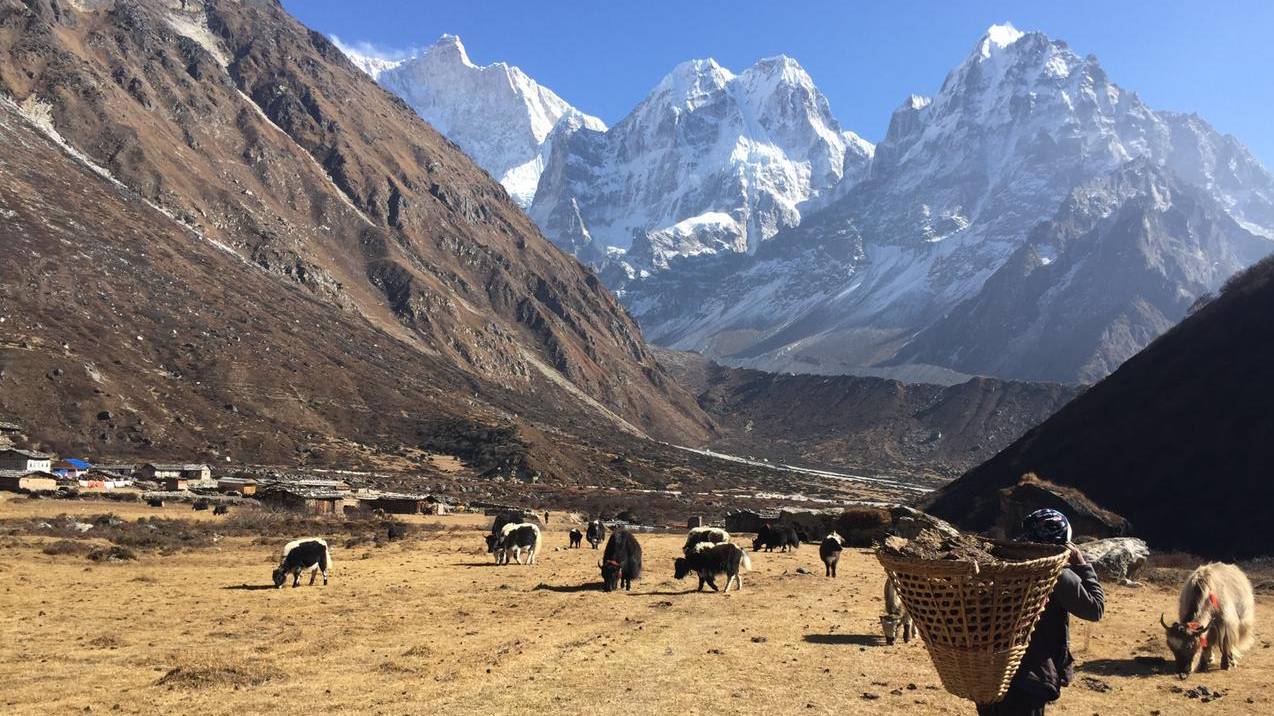Everest Base Camp Trek
Overview
"Join Snowy Horizon on this classic trek to Mount Everest Base Camp and enjoy some of the most magnificent views right in front of the highest mountain in the world. Everest is a truly overwhelming sight –just one of many things that make a trek to Everest base camp the perfect trekking adventure! “
In the Everest Base Camp trek, the trekking team will explore the Khumbu region, the Sherpa heartland and home to Mt. Everest the world’s highest mountain with an elevation of 8,848m the top land of the world. Trekkers will see many mighty peaks including Cholatse, Ama Dablam, Nuptse, Pumori, Lhotse, etc. The most popular Everest Base Camp Trek towards your ultimate goals to the real base camp for Mt. Everest Expedition and Kala Patthar with the panoramic glimpse of Everest Glacier. You follow the traditional route via which the British in 1951, the Swiss in 1952 and the ultimately successful expedition of 1953 including the Sherpa Tenzing Norgay and Sir Edmund Hillary reached the summit.
To experience Everest Base Camp Trekking once you arrive in Kathmandu, a representative of Team Snowy Horizon will pick you up at Tribhuwan International airport to transfer you to your pre-booked accommodation in Kathmandu. After exploring Kathmandu, the adventure starts in earnest with the famous flight to Lukla direct from Kathmandu or a 135km drive to Manthali Airport, Ramechhap and a short flight to Lukla, a Sherpa village where we start the actual trek. The Everest Base Camp trek follows the course of the Dudh Koshi, the ‘River of Milk’, gradually climbing through forests of rhododendron and magnolia. You’ll experience the quick succession of climate and vegetation zones. After reaching Namche Bazaar, where we take a rest day, the route continues along the Imja Khola River to the valley below Everest. Following further the traditional route via Lobuche and Gorak Shep, we then reach our destination: the Everest Base Camp.
The Everest Base Camp Trek passes through various small villages which allows you to experience Sherpa customs, culture and their famed hospitality first-hand. Unsurprisingly, the photographic opportunities are limitless (so don’t forget your devices and charger!). When planning your itinerary to Everest Base Camp, we arrange it so there is enough time to explore Kala Pattar, a great vantage point from which you have a magnificent view of Everest’s south side as well as the Khumbu glacier. Most of our clients agree that this is the highlight of their experience and an essential component of the trek.
Snowy Horizon offers the trek throughout the year and thanks to our experience that we are confident it’ll be an unforgettable experience for you. As with all our packages, it can be flexibly adjusted to your requirements and we are ready to customize or combine the routes to Renjo and or Cho La as well. Feel free to contact us at any time for suggestions and advice.
Day-to-Day Itinerary:
Day 01: Arrival at Kathmandu Airport and transfer to hotel.
Day 02: Rest, last-minute shopping, preparation and briefing in Kathmandu.
Day 03: Drive to Manthali, Fly to Lukla (2800m) trek to Phakding (2610m-4 Hrs.); lodge.
Day 04: Trek from Phakding to Namche Bazaar (3440m-7 Hrs.); lodge.
Day 05: Explore Namche Bazaar, and hike up & down to Hotel Everest View; lodge.
Day 06: Trek from Namche to Tengboche (3870m-5 Hrs.); lodge.
Day 07: Trek from Tengboche to Dingboche (4390m-6 Hrs.); lodge.
Day 08: Acclimatization and hike and exploration at Dingboche.
Day 09: Trek from Dingboche to Lobuche (4930m-5 Hrs.); lodge.
Day 10: Trek to Gorak Shep (5160m-3 Hrs.) hike to Everest Base Camp (5360m-3 Hrs.); lodge.
Day 11: Gorak Shep to Kalapatthar (5545 m) hike and Dingboche back trek (7 Hrs.); lodge.
Day 12: Trek from Dingboche to Pangboche (3985m-5 Hrs.); lodge.
Day 13: Trek from Pangboche to Namche Bazar (3445m-6 Hrs.); lodge.
Day 14: Trek back from Namche Bazaar to Lukla (2800m-8 Hrs.); lodge.
Day 15: Fly to Manthali, Drive to Kathmandu, and transfer to Hotel.
Day 16: Transfer to the airport for final departure.
Day-to-Day Itinerary:
Day 01: Arrival at Kathmandu Airport and transfer to hotel.
Day 02: Rest, last-minute shopping, preparation and briefing in Kathmandu.
Day 03: Drive to Manthali, Fly to Lukla (2800m) trek to Phakding (2610m-4 Hrs.); lodge.
Day 04: Trek from Phakding to Namche Bazaar (3440m-7 Hrs.); lodge.
Day 05: Explore Namche Bazaar, and hike up & down to Hotel Everest View; lodge.
Day 06: Trek from Namche to Tengboche (3870m-5 Hrs.); lodge.
Day 07: Trek from Tengboche to Dingboche (4390m-6 Hrs.); lodge.
Day 08: Acclimatization and hike and exploration at Dingboche.
Day 09: Trek from Dingboche to Lobuche (4930m-5 Hrs.); lodge.
Day 10: Trek to Gorak Shep (5160m-3 Hrs.) hike to Everest Base Camp (5360m-3 Hrs.); lodge.
Day 11: Gorak Shep to Kalapatthar (5545 m) hike and Dingboche back trek (7 Hrs.); lodge.
Day 12: Trek from Dingboche to Pangboche (3985m-5 Hrs.); lodge.
Day 13: Trek from Pangboche to Namche Bazar (3445m-6 Hrs.); lodge.
Day 14: Trek back from Namche Bazaar to Lukla (2800m-8 Hrs.); lodge.
Day 15: Fly to Manthali, Drive to Kathmandu, and transfer to Hotel.
Day 16: Transfer to the airport for final departure.
Full Board Service Cost : Please contact us by email or call us
Cost Include
- Arrival and departure transfers to and from Airports.
- 2 Nights Kathmandu and 1 Night Mulkot Hotel accommodation BB Plan.
- Transfers to Ramechhap Airport fly to Ramechhap-Lukla-Ramechhap for members and a guide.
- Three meals a day (BLD-tea-coffee) and twin sharing teahouse accommodation during the trek.
- 15 Kg Baggage allowance for trekking per person carried by porter (s).
- Experienced trekking guide during trekking as per group size.
- National Park entry fee (Sagarmatha National Park)TIMS card /Khumbu-Pasang Lhamu Village entry permits.
- All wages and medical insurance for the guide and porters.First Aid medical kits for the Group and the staff.
- Free assistance service for cargo and duty clearance on domestic flights.
- Our service charge and Government Taxes levied in Nepal. Complete pre-departure information.
- Farewell Dinner in Kathmandu before departure.
- Snowy Horizon Special Gifts (T-shirt, Pashmina, etc.)
Cost Exclude
- Lunch and Dinner during your stay in Kathmandu (except farewell dinner)
- Items of personal nature, Laundry, internet Expenses, Tips
- Clothing, Packing Items or Bags, Personal Medical Kit, Personal Trekking Gears
- Rescue, repatriation, medicines, medical tests and hospitalization expenses for clients.
- Tips, gifts, souvenirs.
- Any other item not included in the “Package Include” section.
Base Camp Service Cost : Please contact us by email or call us
Cost Include
Cost Exclude
Notes
- The itinerary is changeable and modifiable as per the needs and time frame of trekkers.
- The cost will be re-calculated if the itinerary is changed or modified.
- Additional activities may be added as per trekkers' request with appropriate additional cost.
- The cost may also be affected due to the requirement for a number of guides and porters.
- For any kind of change please contact us by mail or call.
- Grade: Mountaineering
- Elevation: 8,848.86m
- Location: Nepal/Tibet border
- Coordinates: 27°59′17″ N 86°55′31″ E
- First Ascent: Edmund Hillary (NZ), Tenzing Norgay (Nepal), May 29, 1953
- Season: Late spring and autumn
- Duration: 16 days (typically)
- Group Size: 02-15 person per Group

